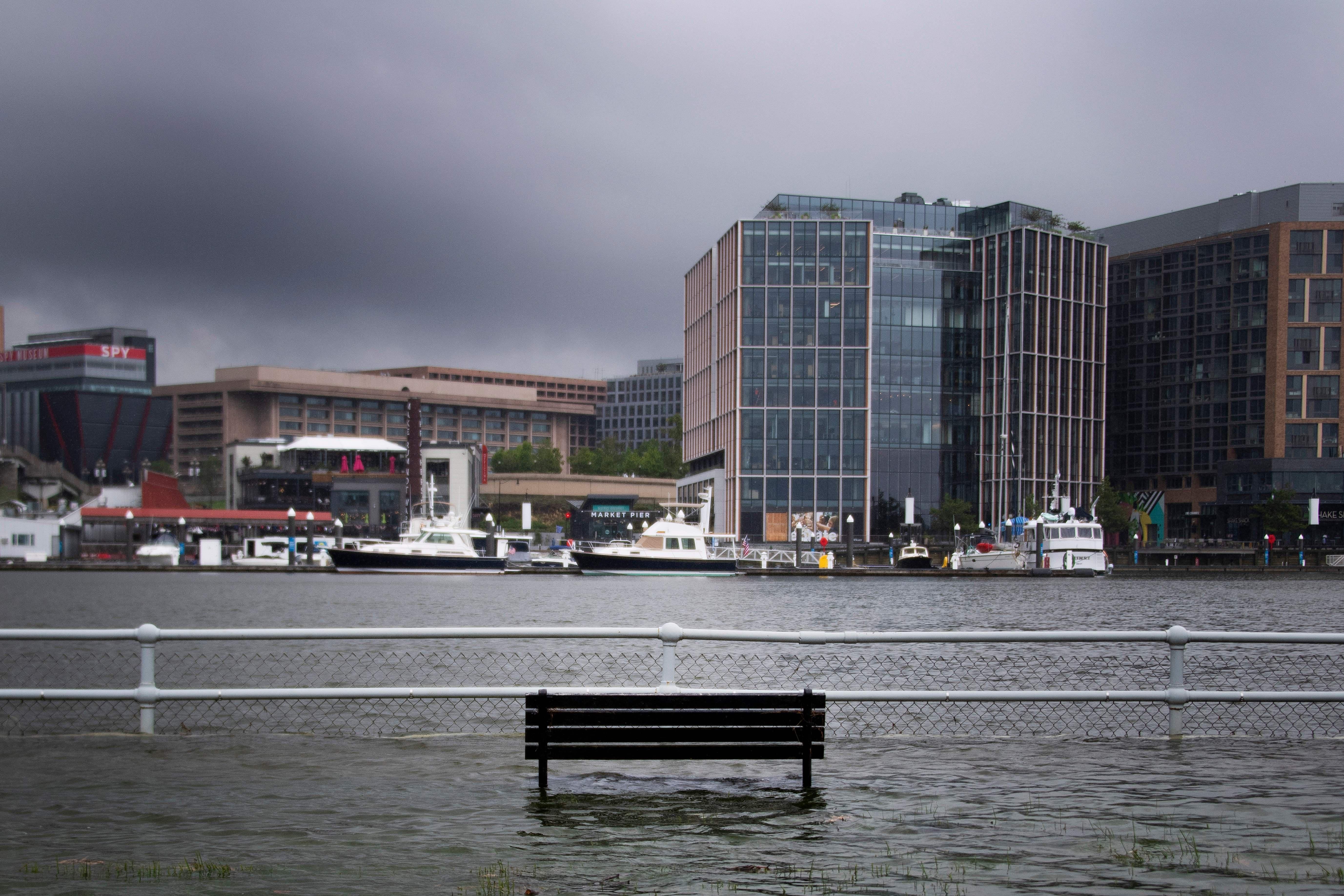Over the past three weeks, three major U.S. cities have been hit by flash flooding events, the kinds of storms that send cars floating down the street. On July 8, early morning rainstorms drenched Washington D.C. and its suburbs. On July 10, big bands of rain submerged parts of New Orleans. And then on Monday, a set of cracking thunderstorms left parts of New York City underwater and impassable.
Is this the opening salvo of the long, doomed fight between American cities and climate change? Or has ubiquitous streaming video just made everyone hyperaware of what was once routine street flooding?
A little of both. There’s no doubt that a good degree of social-media-inspired panic-mongering surrounded, for example, the flooding in New Orleans—a relatively routine street flooding event turned into a national news story by the approach of Tropical Storm Barry—or the flooding in New York, whose significance seemed amplified by the city’s recent struggles with heat waves, black outs, and transportation crises. In New York, for example, one viral Twitter video posited that the disgusting Gowanus Canal had broken its banks and flowed two blocks uphill.
It is harder to generalize about the rate of urban flooding, in part because we don’t have great historical (or current) data on property damage caused by rainfall. (There are a few reasons for this, chief among them that most of it doesn’t get reported to insurance companies.) But we do know that rainstorms are getting more intense. Since 1991, according to the 2014 National Climate Assessment, the biggest storms have dropped more than 30 percent more rain than the 1901-1960 average in the Northeast, Midwest, and Upper Great Plains. So-called “one-percent” storms—the heaviest storm out of every hundred—are also dropping much more rain in the Southeast too. This is likely a consequences of climate change, and events like these are projected to occur as much as five times more often by the end of this century.
We know that rainfall flooding already causes an enormous amount of damage that goes both ignored and unaccounted for. Two in three flood insurance claims during hurricanes are attributed to freshwater flooding, not storm surge. A recent report estimates that America has experienced an urban flooding event once every 2-3 days for the past 25 years. In Illinois, urban flooding caused $2.3 billion in damage between 2007 and 2014, mostly in Chicago.
We also know that the phenomenon is getting worse in places where it has been studied. In Canada, rainfall has surpassed fire as the leading cause of damage to homes, and damage has “been rising at an unsustainable rate for more than 25 years.” In Houston, manmade flood plains of asphalt and concrete have expanded unpredictably as sprawl sealed off natural land west of the city. Between flooded rivers and swamped cities, extreme rainfall may be the most damaging early consequence of climate change to come for the U.S. Maybe cities should start replacing firefighters with floodfighters.
What makes urban flooding hard to manage is that it doesn’t hew neatly to FEMA flood plain maps, or align with FEMA’s designations of vulnerable areas at all. It isn’t dictated by natural landscapes but is instead reliant on an unmapped series of impermeable roads and parking lots. Its outlets aren’t river mouths, but storm drains of varying capacity.
Some cities have tried to tackle the problem by building underground holding pens for stormwater, so-called “deep tunnels,” where water can collect. But these are expensive, vulnerable to changing rainfall patterns, and only as good as the sewers that feed them.
The newer theory is to stop the water from entering the sewers in the first place, with the implementation of technologies like green roofs and bioswales (those green areas you see around tree beds). With more water falling from the sky, we’ll need to keep more of it where it falls.
